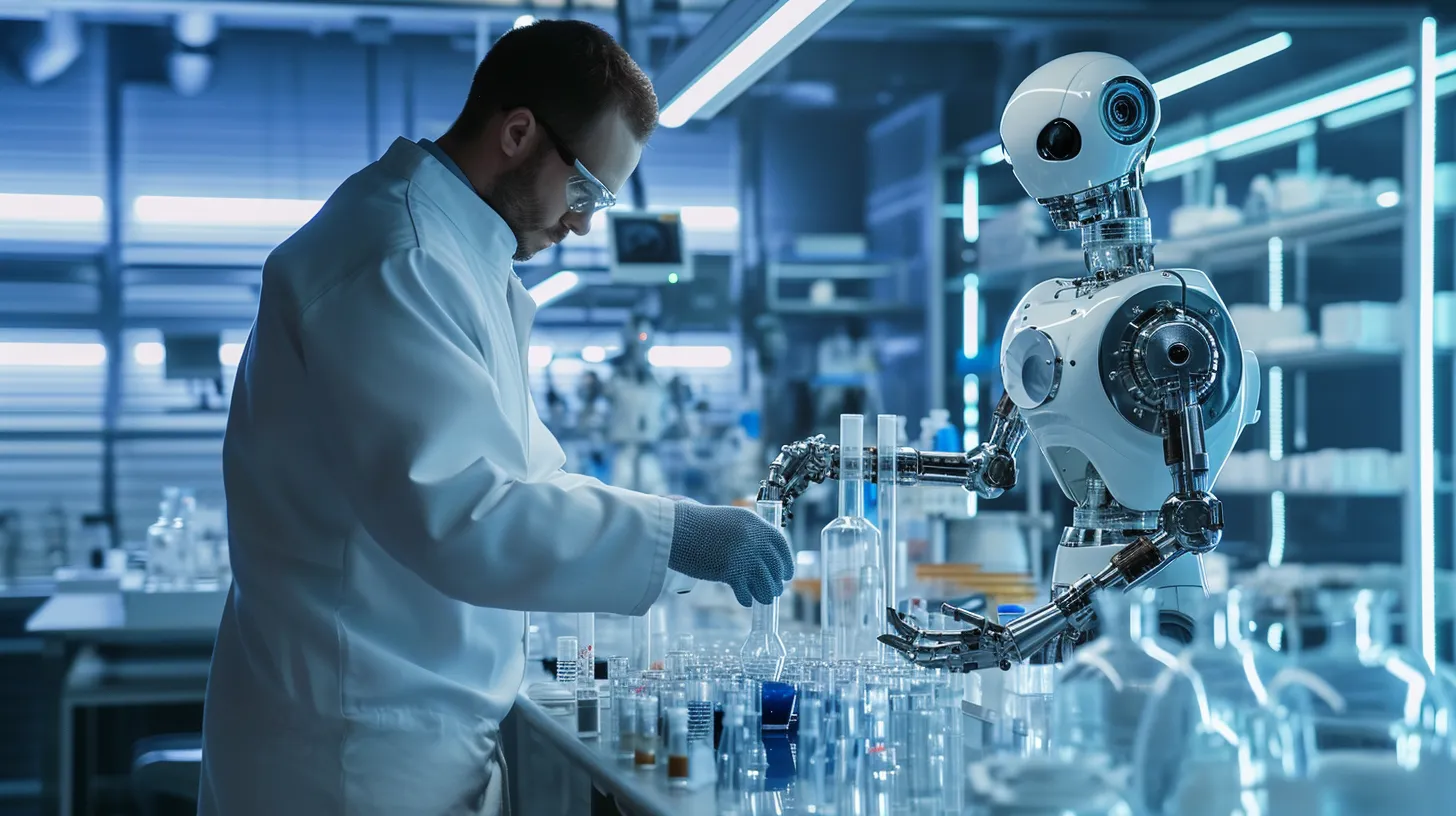The Accelerating Pace of AI Innovation in Chemistry and Biology

The Silicon Sorcerer’s Apprentice
Artificial intelligence is conjuring up breakthroughs in chemistry and biology
In the dusty halls of academia and gleaming labs of industry, a revolution in research is brewing. The recently debuted powers of artificial intelligence (AI) have provided scientists with a modern-day philosopher’s stone. Long-standing barriers to insight and innovation are crumbling as machine learning helps researchers transmute raw data into disciplinary gold.
Across the biological and chemical sciences, AI algorithms are dramatically accelerating discovery. These thinking machines have become adept at sifting through vast research libraries, hypothesizing new models, and even predicting the outcomes of experiments—at times surpassing their human supervisors. Commercially, the value is immense: accelerated drug development, novel biomaterials, enhanced crop yields, and much more.
In pharmaceuticals, AI systems can now scrutinize molecular misfits to design promising new drug compounds in the blink of an eye, a task once consuming years of chemists’ efforts. Some biotechnology firms expect to shrink the drug discovery timeline by as much as five years thanks to these advancements. The prospect of breakthroughs arriving at blistering pace has investors salivating. AI-enabled computational biochemistry, meanwhile, allows scientists to simulate intricate protein structures and interactions previously out of reach. Machine learning’s aptitude for spotting hard-to-detect patterns is also enriching fields such as nutrition and genetics.
In materials science, AI models can rapidly screen millions of potential inorganic compounds to identify candidates for new metals, semiconductors and other materials. One system recently discovered over 2 million new stable inorganic crystal structures, including many materials not previously known. This expands the materials catalogue exponentially for researchers seeking to develop advanced materials for applications from renewable energy to quantum computing.
To engineer these AI-proposed materials, robotic labs are also being deployed. One autonomous lab performed over 350 experiments in just 17 days using closed-loop machine learning, successfully synthesizing numerous materials at a pace far beyond human-led labs. As robotics is combined with AI, the discovery and development of novel materials is being accelerated tremendously.
Yet sorcery always had its shadows. The unfettered use of such powerful tools risks unintended, even dangerous, consequences. Machine learning can compound biases lurking within datasets. When applied injudiciously, AI may erode safety and accountability. Some fret it could disempower the scientific enterprise, widening gulfs between AI “haves” and “have-nots”.
These perils have already evoked calls for caution within the community. More journals demand transparent reporting on the methodologies behind AI-generated results. Governing bodies are deliberating firmer oversight protocols and frameworks. The intent is not to undermine innovation, but to ensure ethics can evolve apace.
For science still wrestles with deep unknowns. No silicon oracle, however ingenious, can yet conjure a grand unified theory from the ether. To push the frontiers further, today’s trailblazing AI researchers will still need traditional scientific pioneers by their side. Even armed with wondrous new powers, one must temper ambitions with wisdom. Therein lies the essence of discovery.
A Responsible Path Forward
Realizing the full potential of AI in chemistry and biology without unintended consequences will require responsible governance and ethics-by-design approaches. Companies developing these technologies must prioritize transparency, testing and safety. Access must be equitable so all may benefit from innovation, rather than widening gaps between the AI “haves” and “have-nots.”
Rigorous testing and validation frameworks will be essential to build confidence in AI tools for generation and discovery. Given the black-box nature of many algorithms, efforts to improve explainability will be needed so humans can better understand AI reasoning and avoid blind reliance. Diversity and inclusion must be elevated in data collection and model development to prevent amplification of systemic biases.
Scientists have a duty to carefully evaluate the risks that come with exponentially scaled-up capabilities, and pursue oversight proactively rather than reactively. AI should augment human intelligence rather than replace it. Striking the right balance will require cross-disciplinary and cross-industry collaboration.
A New Era of Accelerated Discovery
The staggering implications of AI have evoked both enthusiasm and apprehension across scientific fields. But prudent governance and ethics-focused development can mitigate the perils, while unleashing tremendous progress for humanity.
Thanks to these emerging technologies, researchers have newfound powers to generate hypotheses and insights at machine scale and speed. When combined with human creativity and wisdom, AI systems can enhance and accelerate scientific inquiry like never before. From climate resilience to curing disease, the breakthroughs unlocked by AI’s apprenticeship to human scientists promise a future of greater prosperity and flourishing for all.